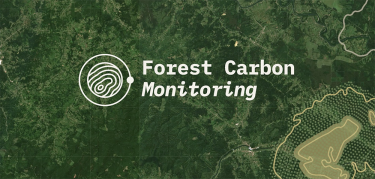Towards next generation forest monitoring

There has never been so much forest data compiled by so many different actors with different tools. EFI’s Scientific Seminar on 7 October highlighted how important cooperation and partnership between different systems are, and that the time is right to establish an integrated monitoring system that can give scientists, policy makers and the public information about the multifunctionality of forests. It will need collaboration, effort and understanding – granting access to data to create a system in a harmonised, transparent way, to bridge the gaps between different communities.
The online seminar explored the topic of forest monitoring systems in Europe, looking first at the latest scientific and technical developments in the field of remote sensing and forest monitoring, and then discussing the needs of policymakers for forest-related data and information.
Peter Potapov, Research Professor, Maryland University explained some of the new new ways and applications to analyse changes in forests using satellite-based data. These include tools for near real-time forest monitoring of disturbances, which have uses such as combatting illegal timber extraction.
This was complemented by Gherardo Chirici, Professor at the University of Florence, who explained some of the new opportunities from Earth observation. He emphasised that the most important gamechanger has been using high performance computing and in-the-cloud infrastructure, for example the Google Earth engine. Professor Chirici highlighted the need for a coordinated, integrated approach and encouraged all to participate in the EFI Network Fund project EFINET, which aims to fill current information gaps, analysing the new technologies and data available, and identifying opportunities for making effective use of all available sources of information.
Peter Surovy, Associate Professor, Czech University of Life Sciences, Prague explored the forest monitoring situation in the Czech Republic, which has been monitoring forests for over 100 years. Data collection has changed over time, and now four methods (territorial, drones, airplane and satellite) are used.
The first panel discussion looked at the main challenges and opportunities to develop a harmonised forest monitoring system in Europe. Panellists agreed that we have to make full use of the all the potential of all the data streams – integrating ground measurements, satellite observations and going beyond just an assessment of wood resources to cover the multifunctionality of forests, including indicators such as soil health. It is vitally important that this data is reliable, and that it can be checked. Another important element is interpreting the data and providing the key messages – telling the story to not just researchers, but also policymakers and the general public.
All panellists highlighted that to do all this requires collaboration, integration and understanding of the different information communities – this would also generate synergies and avoid overlaps in effort.
The second half of the seminar focused on policy making and information needs. Both Stefanie Linser, Senior Researcher, BOKU and EFI's Forest Policy Research Network and Thomas Haußmann, Head of the Liaison Unit Bonn of Forest Europe, focused on the topic of indicators. Stefanie Linser showed the clear potential to use pan-European data to report progress towards some of the EU forest-relevant targets in policies like the EU Bioeconomy strategy, while Thomas Hausmann pointed at the further development of indicators and emphasised the importance of cooperation and coordination.
The second panel discussion brought together policymakers from different countries to explore their data needs. The panellists had the same wishlist – they wanted complete, understandable, reproducible and most importantly timely data. It was still important to have the classic data from the past to see developments over time – but in view of the climate and biodiversity crisis additional information is also needed to tackle ecological questions like forest structure, site conditions, soil conditions, as well as risks. At a strategic level, this information on forest resources and future projections is essential for new investments and policy decisions – and helps to answer public questions about what kind of forests we want in future, and to fulfil international reporting requirements.
More information



